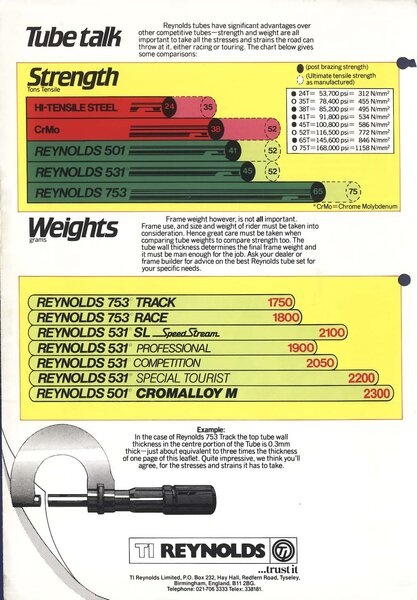Re:
531 P and 753 were different weights. Here is the Reynolds brochure from mid 1980s that sets out their range for framesets.
Can't account for the lack of chain peg but everything else suggests 753, especially the weight. I read the views about chrome and 753 but Peugeot put chrome on 531 P and on 653 as well, so not sure I share that view as a general explanation. Ride feel was a big factor with 753, ie stiff, reflexive, and could feel the road BUT some said too harsh (famously, Merckx, who put his name on many bikes after his racing career ended, ie one of the stories behind 653 tubesets). I happen to have Peugeot 531P, 653 and 753. The 753 is the harshest of the 3 but I love it's tautness and the sense of speed it imparts. One of my sons happened to borrow the 753 this w/e and sent a text to comment on how quick it was. 531P is the softer ride of the three, the 653 feels steady on long rides - look how many people toured using 653 framesets.
The sticker on my spare 753 Perthus frame shows the old PZ coding, SIS (ie had the early indexed down tube shifters, and the frame size, 60 - they measured to the top of the seat tube, not the centre). Don't know what the numbers in the upper line signify, but not aware this was linked to colour codes. The numbers do not relate to the serial number on the frame which show, as said earlier, year, month, number that month.
Peugeot also used some Columbus tubesets during this period but can't access the websites that had the catalogues so can't advise further.
To cut to the chase, I'm with Danson - if it looks like 753, sounds like 753 (the ring makes a lovely sound) and it weighs like 753, can't think it would be anything else.
Good luck.


